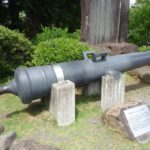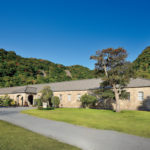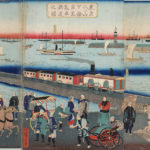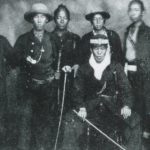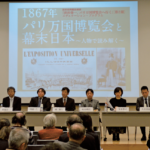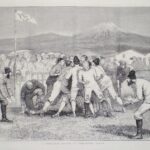When the port of Yokohama officially opened to foreign trade in 1859, the edible crops available to the villagers were predominantly rice, wheat and soybeans. The pleasures of the cabbage and the cauliflower, the carrot and the tomato, even that great French invention of 100 years previous the garden strawberry were as yet unknown to the native inhabitants, cut off from the world as they had been for 220 years.
The first foreign settlers of Yokohama quickly sought to bring more fresh fruit and veg to the table. Among the pioneering market gardeners was Englishman W.H. Smith, a legendary figure loved in the community for his cheerful personality and many sporting, entrepreneurial and “public-spirited” exploits.
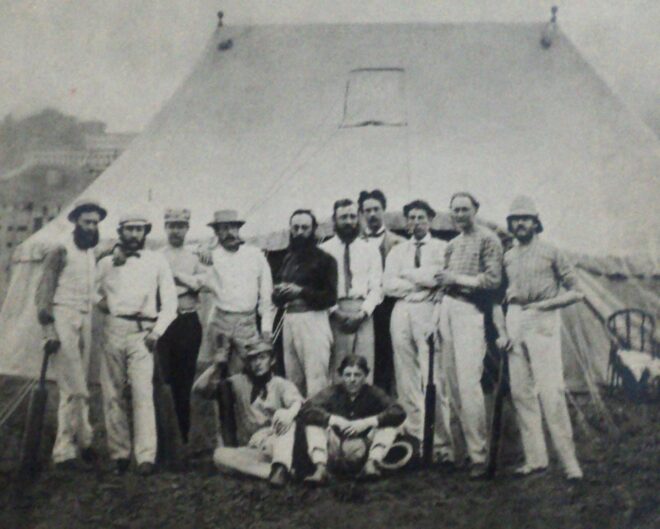
W.H. Smith (seated right) representing the Shore Team (Yokohama) in the first cricket match ever played in Japan (v. Naval team), June 1863. YOKOHAMA COUNTRY & ATHLETIC CLUB
Smith is well known for designing Japan’s first public gardens, now called Yamate Park, which opened in 1870 and would become the location of Japan’s first tennis club, the present-day Yokohama International Tennis Community. He is less well known for his private garden, but Public-Spirited Smith it was who first grew western-style vegetables in Japan in a plot beside his house on the Bluff. Smith’s towering cauliflowers were the talk of the town, while his strawberries brought color to the cheeks of the hospitalized and military personnel with whom he shared his harvest.
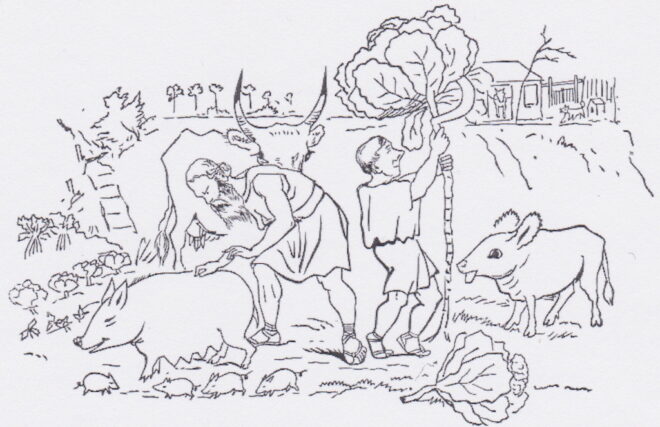
WH Smith (right) in his garden on the Bluff, as caricatured by Charles Wirgman for Japan Punch, 1866. YOKOHAMA ARCHIVES OF HISTORY
Naturally impressed, the local authorities soon took Smith’s and fellow foreign gardeners’ expertise to Sueyoshicho, an area of Yokohama then mostly reserved for growing rice. Here they sowed Japan’s first strawberry fields among other crops, and the horticultural revolution would begin.
The Sueyoshicho district stretches along the Ookagawa river parallel to present-day Isezakicho, close to where it empties into the bay at Sakuragicho. Isezakicho was developed here in the 1870s as Yokohama’s main entertainment and shopping street.
Among the famous old companies still operating in Isezakicho is Fujiya, creator of the now ubiquitous “Strawberry Shortcake,” a creamy confection made with sponge rather than biscuit.
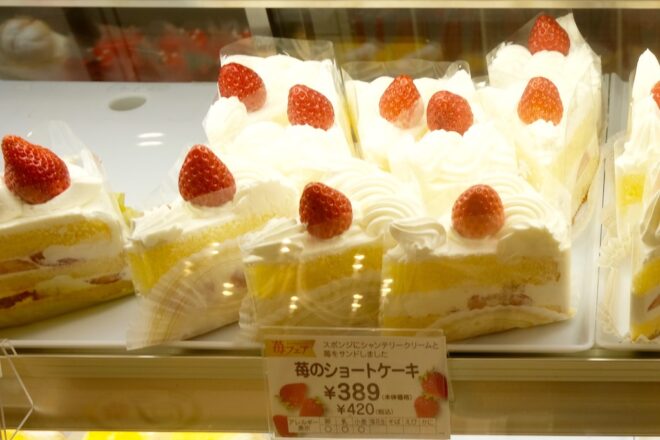
Slices of Fujiya’s famous Strawberry Shortcake on display in the Isezakicho store THE JAPAN JOURNAL
Founded in 1910 in Motomachi, Fujiya opened its second shop in Isezakicho in 1922 and would grow to become a nationwide chain. The first building was destroyed in the 1923 earthquake while the current building, completed in 1937, was requisitioned by the Occupation forces after the war and served as the Yokohama Club for American officers.
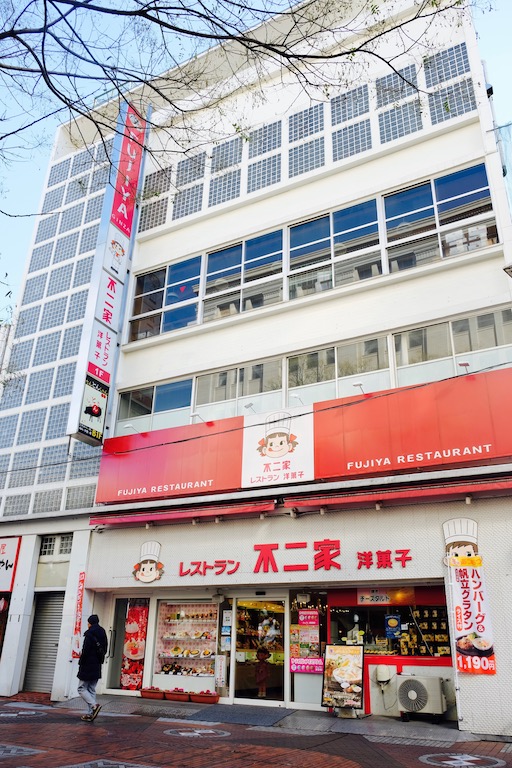
The pioneering Fujiya cake shop on Isezaki Mall, designed by the Czech-American architect Antonin Raymond and completed in 1937. THE JAPAN JOURNAL
Strawberry farming spread rapidly in Japan and today the country produces countless varieties, endlessly hybridizing in the quest for the perfect strawb. A summer fruit in the West, in Japan most strawberries are grown indoors and are especially abundant and tasty in the winter months through to the beginning of March, though the season is long and extends into May. (“Natural strawberries” can be enjoyed in May and June.)
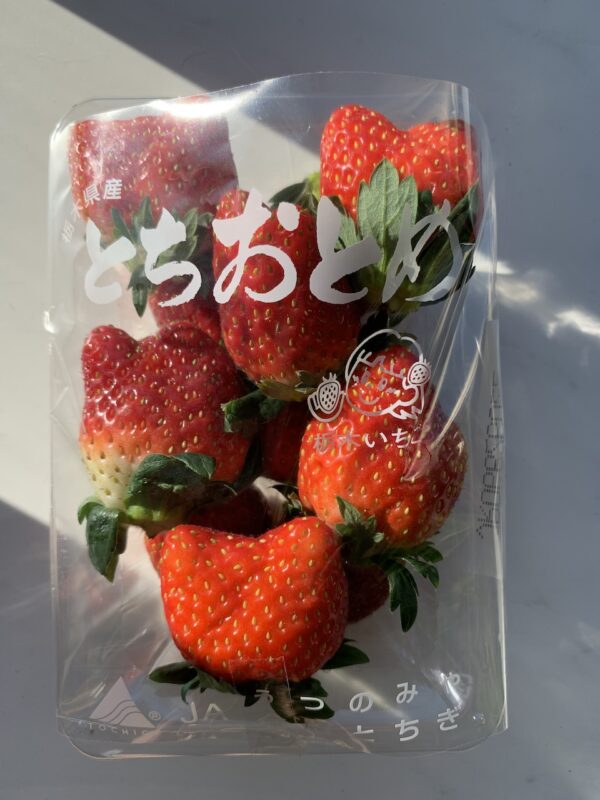
One of the season’s first punnets of Tochiotome strawberries, early December 2021. The Tochiotome hybrid was created in 1994 and is one of Japan’s most popular. These beauties were grown in Utsunomiya, Tochigi Prefecture. THE JAPAN JOURNAL
Painstakingly cultivated for a long harvest, Japan’s strawberries can astound with their fragrance and phenomenal sweetness as well as their price, the platinum grade Migaki-Ichigo for example selling for 1,000 yen a pop. You can pick some of the more common winter varieties yourself at any number of local farms, but a regular visit to your neighborhood greengrocer should see you able to sample many of the delicious and nutritious new varieties from around the country before the peak season ends in March.
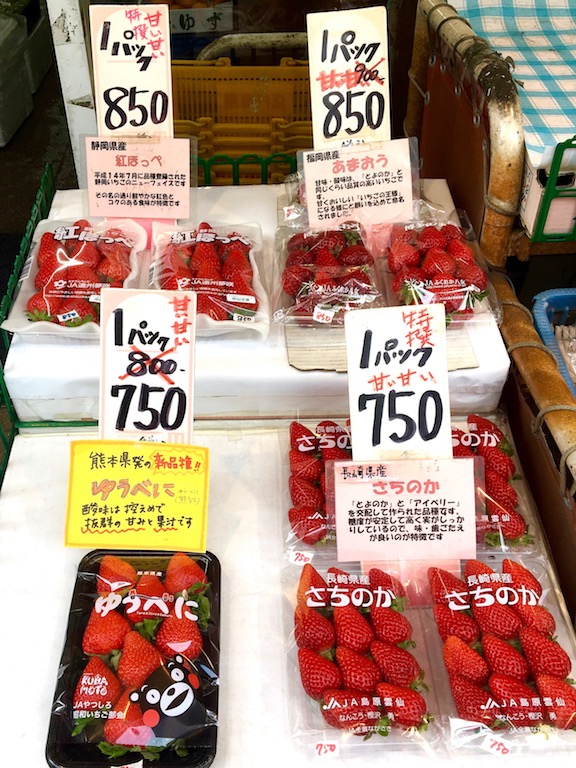
Strawberries on sale at a Yamate, Yokohama greengrocers. Clockwise from top left, Benihoppe (Shizuoka Prefecture), Amaou (Fukuoka Prefecture), Yuubeni (a new variety from Kumamoto Prefecture) and Tochinoka (Nagasaki Prefecture). Photo Feb. 2019, THE JAPAN JOURNAL
Alex Hendy
First published Feb. 2019. Updated Dec. 2021.

